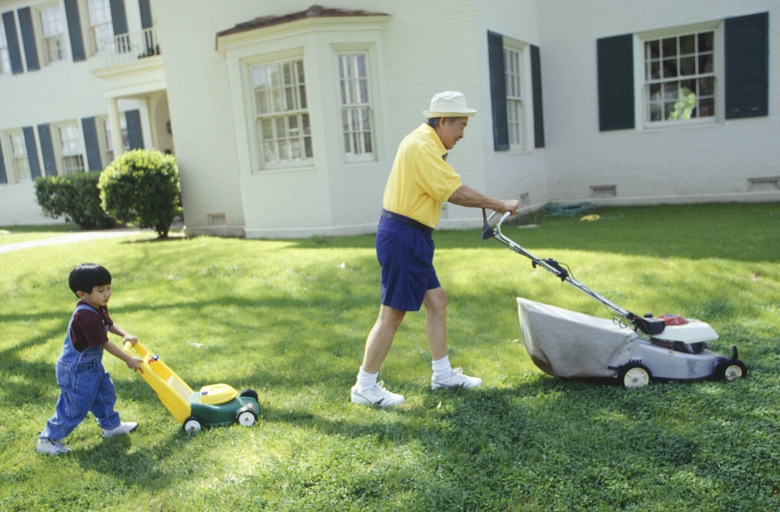Which Pesticide Kills Chiggers?
Lush lawns and thick-growing landscaping plants might look attractive, but those areas are often jealously guarded by chiggers, microscopic mite larvae that feed on the skin cells and tissue fluids of numerous hosts, including humans. Also known as red bugs, chiggers can trigger intensely itchy, red welts in places you likely won't want to scratch in public. Fortunately, various pesticides effectively kill chiggers in outdoor spaces.
Step 1
Chiggers prefer damp, shady areas with thick vegetation. They are typically active from mid- to late spring through late summer or autumn, depending on when cold snaps and killing frosts arrive in your area. Chigger populations are spotty. Some parts of your yard might be crawling with the tiny parasites, while other lawn areas remain chigger-free. That's because adult females lay up to 15 eggs every day, and the young larvae don't wander too far away from their hatching place or each other. Because of this clustering behavior, you should treat chigger "hot spots" instead of your entire yard.
Monitoring Chigger Hot Spots
Step 1
The Ohio State University Extension recommends locating chigger hot spots with a 6-inch square piece of black cardboard. Place the cardboard on end near the edge of your lawn and examine it with a magnifying glass after waiting just a few minutes. Chiggers look like tiny red, yellow, pink or orange-colored dots against the black background. Perform this test in about 10 different parts of your yard, including areas with grass, leaf piles, shrubs and weeds. Spray pesticides only on the areas with chigger populations.
Step 2
- Chiggers prefer damp, shady areas with thick vegetation.
- Perform this test in about 10 different parts of your yard, including areas with grass, leaf piles, shrubs and weeds.
Chigger-Killing Insecticides
Step 1
Outdoor pest control products containing carbaryl, bifenthrin or permethrin can effectively kill chiggers. All three of those chemicals work either on contact or through ingestion and affect the pest's nervous system, resulting in paralysis, convulsions and death. The University of Kentucky Extension recommends using a spray formulation because it is typically more effective than granular forms when it comes to killing chiggers. Remember that these pesticides also kill beneficial insects, so use them only when and where necessary.
Using Insecticides
Step 1
Chigger-killing pesticides typically require you to mix between 1 and 5 tablespoons of product for every gallon of water. Follow the instructions on the product's label, however, because rates do vary. The mixed solution should treat anywhere from 165 to 1,000 square feet of lawn area. Using a handheld garden sprayer, treat all of the known hotspots as well as any areas frequently used by people, such as around play areas, pathways, picnic tables, decks and lawn chairs. Evenly spray infested grass and thoroughly spray the surrounding vegetation to about 3 feet above ground level. Making one application in mid- to late spring might be all you need for small chigger populations, but extreme infestations often require a second application in two to three weeks.
Step 2
- Outdoor pest control products containing carbaryl, bifenthrin or permethrin can effectively kill chiggers.
- Using a handheld garden sprayer, treat all of the known hotspots as well as any areas frequently used by people, such as around play areas, pathways, picnic tables, decks and lawn chairs.
Staying Safe
Step 1
When monitoring or spraying for chiggers, protect yourself from parasites and chemicals by wearing appropriate clothing, including long sleeves, a facemask, protective eyewear and socks with boots or closed shoes. Tuck your pants into the socks and button up your shirt to make it harder for chiggers to penetrate your clothing. Following the manufacturer's instructions, spray your skin, clothes and shoes with an insect repellent before venturing out into possibly infected areas. Keep your kids and pets off treated lawn areas until the spray completely dries.
